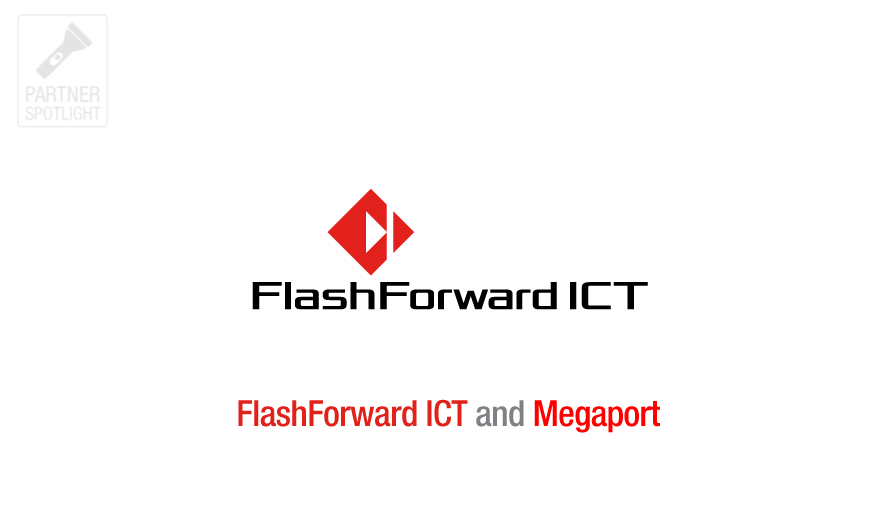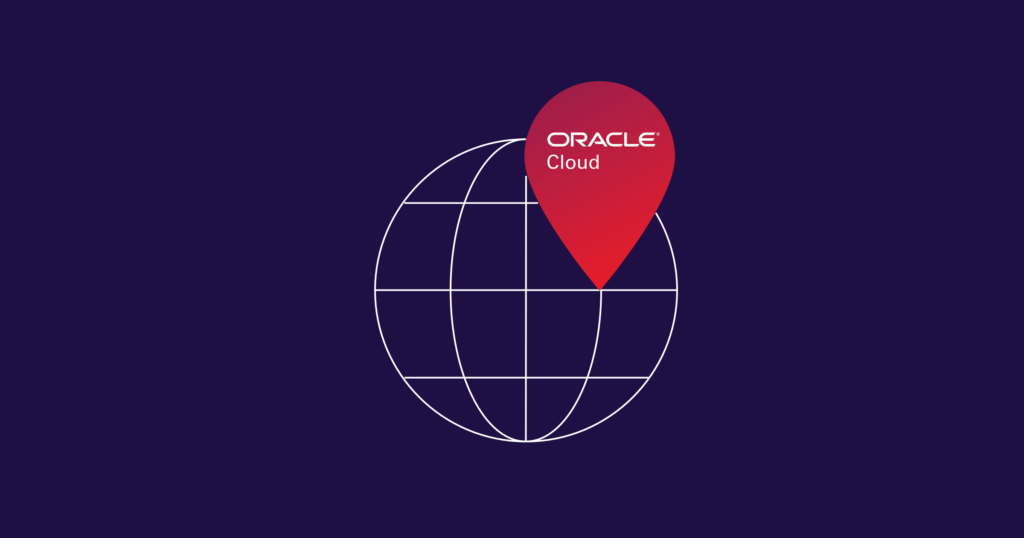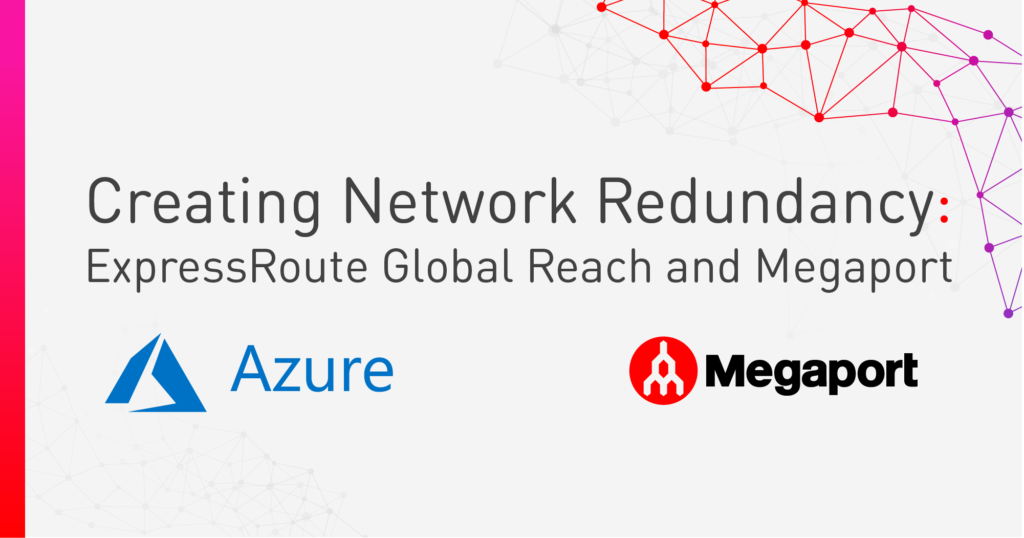
Creating Network Redundancy with ExpressRoute Global Reach and Megaport
- May 27, 2019
How to use Megaport’s Private VXC and Azure ExpressRoute Global Reach to connect to the cloud and build a fully redundant multi-vendor solution.
Building secure, high-availability networks cost enterprise network engineers and IT managers far too much time. Managing the balance of cost and performance when connecting data centres and public cloud environments is a difficult process that often takes longer than expected. Traditionally, enterprises would procure either Layer 1 (wave/fiber) or Layer 2 (Ethernet) point-to-point connections from a Network Service Provider to achieve connectivity between environments.
Network as a Service (NaaS) connectivity provides an all-encompassing solution to these issues while helping enterprises future-proof their network architectures at the same time. NaaS is the next-generation service for building reliable, cost-effective, and scalable connectivity between infrastructure and the cloud. Megaport provides NaaS connectivity to and between all major cloud providers, and in doing so, makes the cloud journey easier for enterprise businesses.
When it comes to connecting to hyperscale cloud providers, Microsoft is a key choice for many companies wanting to access world-class services and applications to run critical workloads. With Megaport, creating a fully redundant multi-vendor solution between data centres and Microsoft Azure is simple. Using a Megaport Private VXC and Microsoft ExpressRoute Global Reach, you can reach Azure from your private data centre instances while also connecting these data centre instances together to form a redundant network architecture.
Benefits of NaaS compared to traditional connectivity:
- ‘As a Service’ model with on-demand scalable bandwidth and no long-term lock-in contracts.
- Private connectivity via Megaport and Microsoft global backbone.
- Management of routing between private data centres and cloud environments.
What does the network architecture look like?
When you deploy connections to Microsoft ExpressRoute via Megaport at two enabled data centres, connecting to two ExpressRoute edge peer locations, you have the ability to connect VNETs in multiple regions back to your on-premises private network. You also have the option to take a premium SKU with the ExpressRoute for global access. When ExpressRoute is set up, you can route between your on-premises instance and Microsoft Azure services.
The diagram below represents two Megaport-enabled locations and two ExpressRoutes. In this example, both the Bay Area and Northern Virginia customer networks in the data centre can route to VNETs in US West and US East. However, they’re not able to route between the two data centre locations. The Bay Area network 10.0.2.0/24 can route to US West VNET 10.0.3.0/24 and 10.0.4.0/24 but can’t yet route to the Northern VA, Washington DC Data Centre 10.0.1.0/24.
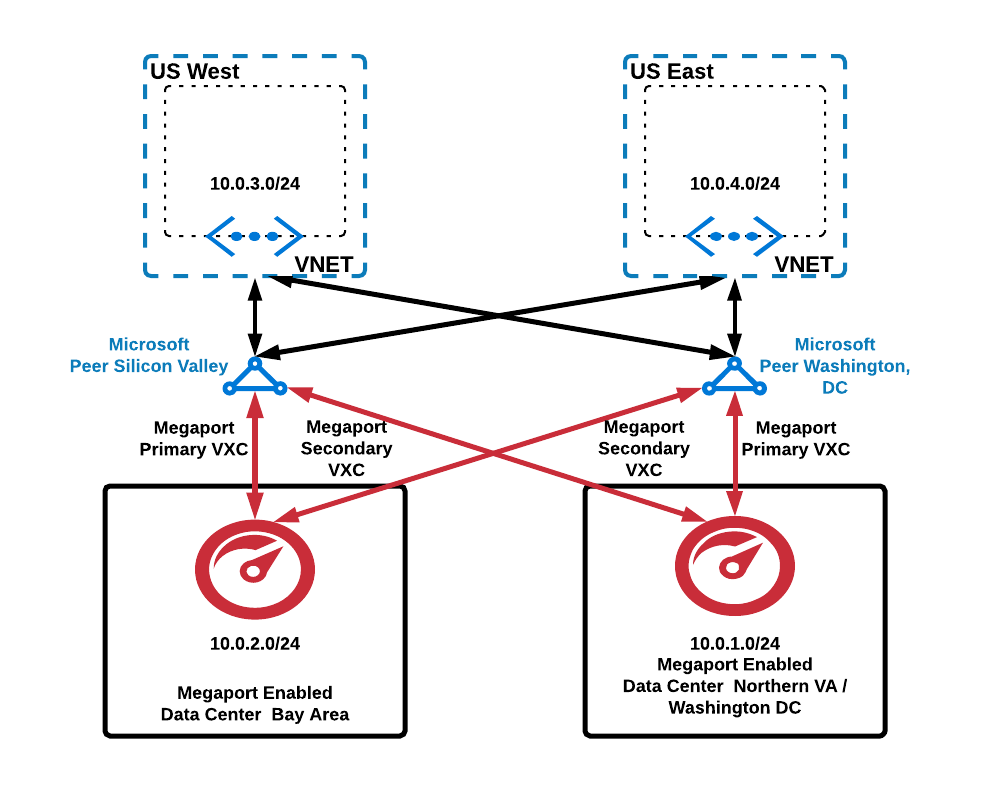
With Megaport, you can additionally link your data centres over private connections. Using ExpressRoute Global Reach, you can connect your ExpressRoutes and route directly between your private Megaport-enabled data centres. In the example below, the user is now able to route via Microsoft between 10.0.2.0/24 and 10.0.1.0/24.
You can also create a Megaport Private Virtual Cross Connect (VXC) between any two Ports over the global network. This creates a private, secure, point-to-point Ethernet connection that can be used for core network backbone or connecting productions to a Disaster Recovery data centre. Connections can be turned up on demand and may be scaled up or down at any time from 1Mbps to the size of the lowest bandwidth Port on either end.
In this example, a Private VXC connection has been deployed between the two data centres. The user will set up routing via a static route or BGP peer on their CE at both the A and B end.
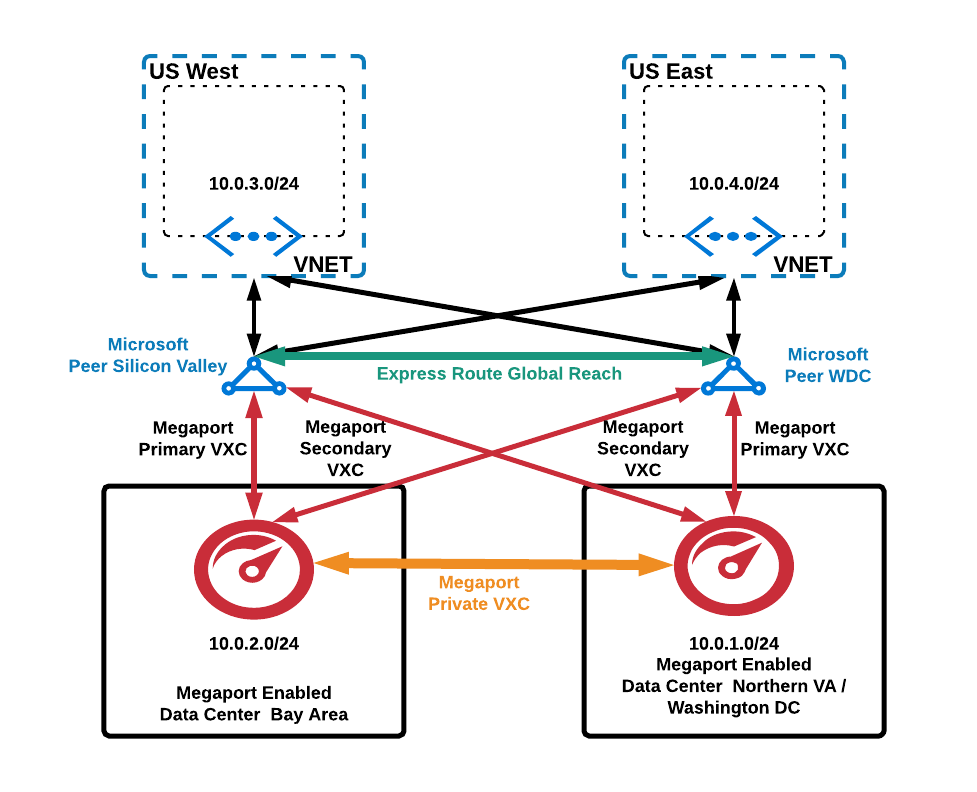
How does the pricing work?
ExpressRoute Global Reach:
Once your ExpressRoutes have been deployed at two Microsoft Peer locations, ExpressRoute Global Reach can be added. Each ExpressRoute enabled with Global Reach will require an additional monthly fee from Microsoft based on the bandwidth selected. Data egress and ingress fees are also applied by the Zone at the source destination of the ExpressRoute. This fee will be charged based on the Zone where the ExpressRoute is deployed. For further details on this, check out the ExpressRoute pricing link here .
Megaport Private VXC:
A Megaport private VXC can be deployed on demand between any two Megaports. Pricing is based on the bandwidth and A and B ends. A private VXC with Megaport has no long-term lock-in contracts and bandwidth can be adjusted at any time on demand via your Megaport account. You only pay for the bandwidth applied to the VXC.
Leveraging Megaport and ExpressRoute Global Reach is a valuable option for reducing costs and enhancing your performance and scalability as your network evolves. Implementing service can be provisioned on demand, whenever you need, and it’s easy to add to services that may already be in place.
As you consider moving forward in connecting your private data centre locations, this may be a viable choice for your business in order to achieve cloud connectivity with a fully redundant multi-vendor solution. For more information, contact us today .
